When examining the rich tapestry of Hindu mythology, one cannot help but be captivated by the prominent role of gods and goddesses. These divine beings, with their complex attributes and roles, hold a place of utmost importance in Hinduism. From the creation and preservation of the universe to the destruction and transformation of life, these deities embody a profound understanding of the human experience. In this article, we will delve into the intriguing realm of Hindu mythology, exploring the major gods and goddesses, their roles and attributes, captivating mythological stories, as well as their influence on art, culture, festivals, and daily life. Join us on a journey of discovery into the realm of gods and goddesses in Hindu mythology.
Contents
- Gods and Goddesses in Hindu Mythology
- Major Gods and Goddesses
- Roles and Attributes
- Mythological Stories and Legends
- Devotion and Worship
- Symbolism and Iconography
- Gods and Goddesses in Daily Life
- The Role in Dharma and Karma
- Comparison with Other Mythologies
- Influence on Art and Culture
- The Role in Festivals and Rituals
- Contemporary Perspectives
- Conclusion
-
Frequently Asked Questions
- 1. Who are the Trimurti in Hindu mythology?
- 2. How do gods and goddesses in Hindu mythology relate to everyday life?
- 3. Can one worship multiple gods and goddesses in Hinduism?
- 4. Are gods and goddesses in Hindu mythology considered real entities?
- 5. What is the significance of mythology in Hinduism?
- 6. Are there any female deities in Hinduism?
- 7. Are there any stories of gods and goddesses in Hindu mythology interacting with humans?
- 8. Are there any temples dedicated to specific gods and goddesses in Hinduism?
- 9. How are the gods and goddesses depicted in Hindu iconography?
- 10. Can non-Hindus appreciate and connect with gods and goddesses in Hindu mythology?
- References
-
Frequently Asked Questions
- 1. What is Hindu mythology?
- 2. How many gods and goddesses are there in Hindu mythology?
- 3. What are the roles and attributes of gods and goddesses in Hindu mythology?
- 4. Are the gods and goddesses in Hindu mythology worshipped?
- 5. What are some famous mythological stories and legends in Hindu mythology?
- 6. How do gods and goddesses in Hindu mythology influence art and culture?
- 7. What is the significance of gods and goddesses in daily life?
- 8. How do gods and goddesses in Hindu mythology connect with dharma and karma?
- 9. How does Hindu mythology compare with other mythologies?
- 10. Do the gods and goddesses in Hindu mythology have a role in contemporary society?
- References
- Read More
Gods and Goddesses in Hindu Mythology
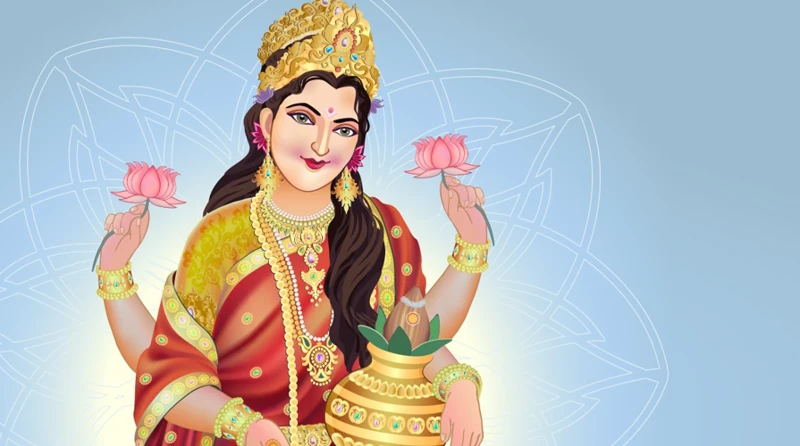
In Hindu mythology, gods and goddesses play a central role in shaping the beliefs, rituals, and culture of the religion. These divine beings are revered and worshipped for their extraordinary powers, attributes, and the various roles they fulfill.
The Hindu pantheon is vast and diverse, comprising numerous gods and goddesses, each with their own distinct characteristics and mythological significance. Some of the major deities include Brahma, Vishnu, Shiva, Lakshmi, Saraswati, and Durga.
– Brahma: Known as the creator of the universe, Brahma is often depicted with four heads, representing his immense knowledge of the Vedas, the sacred scriptures of Hinduism.
– Vishnu: Considered the preserver and protector of the universe, Vishnu is believed to descend to earth in various avatars to restore order and righteousness. His popular avatars include Rama and Krishna.
– Shiva: Often referred to as the destroyer and transformer, Shiva is associated with the cyclical nature of existence. He is worshipped as the ultimate yogi and is revered for his intense power and austerity.
– Lakshmi: The goddess of wealth, prosperity, and abundance, Lakshmi is worshipped for blessings in material and spiritual well-being. She is often depicted holding a lotus flower and showering gold coins.
– Saraswati: Known as the goddess of knowledge, wisdom, and the arts, Saraswati is portrayed with a veena (musical instrument) and is revered by scholars, artists, and musicians.
– Durga: A fierce and powerful goddess, Durga symbolizes female strength and courage. She is worshipped during the festival of Navratri and is believed to protect devotees from evil forces.
These gods and goddesses, among many others, form a pantheon that reflects the intricate tapestry of Hindu mythology. Their presence in Hindu religious practices is celebrated through elaborate rituals, festivals, and daily worship. They serve as a divine connection for millions of followers, embodying virtues, providing guidance, and serving as a source of inspiration in both mythological tales and everyday life. By understanding their roles and attributes, we can gain deeper insights into the complex belief system and cultural significance of gods and goddesses in Hindu mythology.
Major Gods and Goddesses
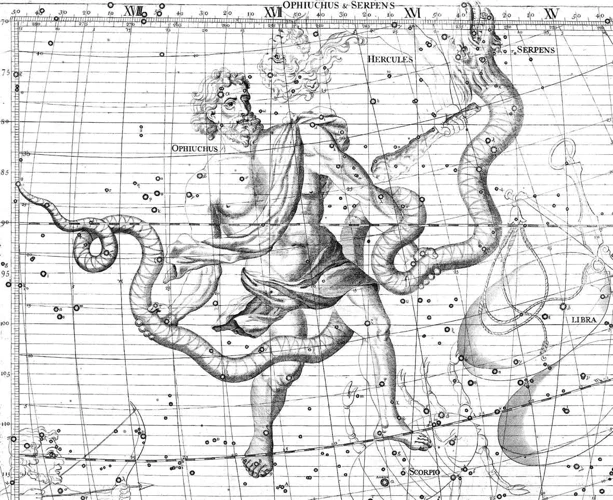
The realm of Hindu mythology is adorned with a multitude of major gods and goddesses, each embodying unique qualities and fulfilling specific roles. In this divine pantheon, Brahma, Vishnu, Shiva, Lakshmi, Saraswati, and Durga hold prominent positions. Brahma, the creator, possesses immense knowledge and is depicted with four heads. Vishnu, the preserver and protector, descends to earth in various avatars. Shiva, the destroyer and transformer, symbolizes the cyclical nature of existence. Lakshmi, the goddess of wealth, bestows abundance and prosperity. Saraswati, the goddess of knowledge and the arts, is revered by scholars and artists. Lastly, Durga, the powerful and fierce goddess, represents female strength and courage. Each of these deities contributes to the rich tapestry of Hindu mythology and holds a cherished place in the hearts and minds of millions of followers. Their stories and attributes continue to inspire and guide devotees in their spiritual journeys.
Brahma
Brahma, one of the major gods in Hindu mythology, holds the esteemed title of the creator of the universe. With his four heads representing the four Vedas, the sacred texts of Hinduism, Brahma is the embodiment of knowledge and wisdom. He is often depicted sitting on a lotus flower, symbolizing purity and enlightenment.
As the god of creation, Brahma’s role is to bring the universe into existence and establish the laws that govern it. According to mythology, he initially created the primordial beings, known as Prajapatis, who were responsible for populating the world with different species. Brahma himself is said to have created various sages, gandharvas (celestial musicians), and celestial beings.
Despite his crucial role in the creation of the universe, Brahma occupies a somewhat lesser position in contemporary Hindu worship and devotion compared to other deities such as Vishnu and Shiva. This is due to several reasons, including the emphasis on the sustenance and preservation aspects represented by Vishnu and the transformative power associated with Shiva. Nevertheless, Brahma is still revered and worshipped by some Hindus, particularly during special occasions such as the Brahmaputra and Pushkar festivals.
It is interesting to note that Brahma’s significance extends beyond his role as a creator. In Hindu philosophical thought, he also represents the concept of Brahman, the ultimate reality or supreme cosmic power that encompasses everything in the universe. This concept of Brahman is central to various schools of Hindu philosophy, including Advaita Vedanta.
Brahma stands as the divine god of creation in Hindu mythology, a figure who represents knowledge, wisdom, and the fundamental principles that govern the universe. Though his worship is not as widespread as some other gods and goddesses, his role and symbolism offer valuable insights into the intricate belief system and rich cultural heritage of Hinduism.
Vishnu
Vishnu, one of the most significant gods in Hindu mythology, holds the role of the preserver and protector of the universe. The name “Vishnu” translates to mean “one who pervades.” Devotees believe that Vishnu has taken numerous avatars (incarnations) throughout history to restore balance and righteousness in the world. Each avatar reflects different aspects and characteristics of Vishnu’s divine nature, revealing his divine purpose and role.
Some of the most revered avatars of Vishnu include Rama, Krishna, and Vishnu’s final avatar, Kalki, who is believed to bring about the end of the current age of darkness and chaos. The stories and accounts of these avatars are found in ancient Hindu scriptures such as the Ramayana and the Mahabharata.
In his various forms, Vishnu is often depicted as having a dark-blue complexion, holding different symbolic objects and wearing rich garments. He is adorned with divine ornaments, and his four arms represent his immense power and presence.
Vishnu’s role as the preserver involves maintaining cosmic order and ensuring the continuity of the universe. He intervenes whenever there is a threat to righteousness and undertakes heroic deeds to protect both gods and humans. His interventions involve a delicate balance between justice, compassion, and the preservation of dharma (righteousness).
Worship and devotion to Vishnu are prevalent throughout Hinduism, often in the form of temples and shrines dedicated to him. Devotees offer prayers, perform rituals, and engage in acts of selfless service to honor Vishnu and seek his blessings. The Vishnu Sahasranama, a collection of a thousand names of Vishnu, is chanted with devotion by many followers.
Vishnu’s teachings and attributes extend beyond the realm of mythology and have influenced various aspects of Hindu philosophy and spirituality. Through his avatars, Vishnu imparts profound wisdom, moral values, and spiritual guidance to humanity. His role as the preserver and protector resonates deeply with believers, providing a sense of hope, reassurance, and an understanding that good will always triumph over evil. Thus, Vishnu’s significance in Hindu mythology is profound, as he represents divine love, mercy, and the eternal cycle of creation, preservation, and ultimate liberation.
Shiva
Shiva, one of the most revered and enigmatic deities in Hindu mythology, holds a pivotal role as the god of destruction and transformation. Also known as Mahadeva or the Great God, Shiva is often depicted with a third eye on his forehead, which symbolizes his transcendental awareness. With matted hair, a crescent moon adorning his head, and a serpent around his neck, Shiva exudes an aura of mysticism and power.
Shiva’s significance extends beyond destruction. He represents the cyclical nature of existence, where destruction paves the way for new beginnings and transformation. As the lord of yogis, Shiva embodies asceticism, meditation, and spiritual practices. He is often depicted seated atop Mount Kailash, dwelling in deep meditation.
In Hindu mythology, there are numerous captivating stories and legends associated with Shiva. One popular tale is that of his cosmic dance, known as the Tandav Nritya. Through this dance, Shiva symbolizes the rhythmic movement of the universe, where creation, preservation, and destruction are intricately linked.
Shiva’s role in Hindu mythology also extends to his relationship with his consort, Parvati. Together, they represent the union of divine male and female energies, known as Shakti. Parvati complements Shiva’s intense power with her nurturing and feminine qualities.
Devotees worship Shiva with great reverence, seeking his blessings for spiritual growth, inner peace, and liberation from the cycle of birth and death. Maha Shivaratri, the great night of Shiva, is a significant festival celebrated by devotees around the world. During this auspicious occasion, devotees observe fasting, meditate, and offer prayers to seek Shiva’s grace.
Shiva’s association with various symbols and objects adds depth to his iconography. The trident, or trishul, represents his power to destroy evil forces, while the damru, a small musical drum, symbolizes the rhythm of creation. The sacred river Ganga flowing from his hair signifies purification and the flow of divine knowledge.
The symbolism and legends surrounding Shiva make him an intricate and fascinating deity in Hindu mythology. His role as the destroyer and transformer reminds us of the impermanence of life while emphasizing the potential for personal growth and spiritual evolution. Exploring the depths of Shiva’s symbolism and mythology is a profound journey that offers insights into the mysteries of existence and the interconnectedness of all things.
Lakshmi
Lakshmi, the goddess of wealth, prosperity, and abundance, holds a significant place in Hindu mythology. She is revered and worshipped by devotees for her powers to bestow material and spiritual well-being. In Hindu belief, Lakshmi is depicted as a beautiful goddess adorned with jewelry, standing on a lotus flower in a pristine lake. Her image symbolizes purity, grace, and fertility.
As the goddess of wealth, Lakshmi is associated with financial prosperity, abundance, and good fortune. Devotees seek her blessings to attain material wealth and success in their endeavors. It is believed that she enters the homes of her worshippers to bless them with wealth and luxury. During the festival of Diwali, which celebrates the triumph of light over darkness, Lakshmi is worshipped with great fervor as devotees invite her into their homes and businesses to bring prosperity for the coming year.
Lakshmi’s significance extends beyond material wealth. She is also associated with spiritual prosperity and enlightenment. Her presence is believed to bring inner peace, harmony, and spiritual growth. Devotees seek her blessings to attain spiritual wealth and liberation from worldly attachments.
In Hindu mythology, Lakshmi is often depicted alongside her husband, Lord Vishnu. This represents the divine union of male and female energies, signifying balance, harmony, and the importance of a harmonious partnership in achieving prosperity and abundance.
Worship of Lakshmi involves various rituals and practices, such as offering prayers, lighting oil lamps, and offering flowers and sweets. Devotees chant hymns and mantras dedicated to her to invoke her blessings. By invoking Lakshmi, devotees express gratitude for the wealth and abundance they have received and seek her continued blessings for a prosperous future.
Through the embodiment of wealth and prosperity, Lakshmi serves as a powerful symbol in Hindu mythology. Her worship reinforces the importance of balancing material and spiritual well-being in one’s life. By invoking her blessings, devotees aspire to not only achieve financial success but also find inner peace, contentment, and spiritual growth. Lakshmi’s presence in Hindu mythology showcases the deep-rooted connection between material and spiritual prosperity in the lives of believers.
Saraswati
Saraswati is one of the prominent goddesses in Hindu mythology, revered as the embodiment of knowledge, wisdom, and the arts. She is often depicted as a graceful and serene figure, adorned in white garments and seated on a lotus flower. Saraswati is associated with the creative arts such as music, literature, painting, and sculpture.
In Hindu iconography, Saraswati is depicted playing the veena, a stringed musical instrument, symbolizing the harmonious interplay of sound and creativity. She is also depicted holding scriptures, representing her association with knowledge and learning.
According to mythology, Saraswati is believed to have provided the language for the Rigveda, one of the oldest sacred texts in Hinduism. She is revered as the patron goddess of scholars, students, and artists, and is worshipped by those seeking inspiration and wisdom.
Saraswati’s influence extends beyond the realm of art and academia. She is considered as the source of divine insight and spiritual awakening. Devotees often seek her blessings and guidance to excel in their chosen fields and attain spiritual enlightenment. Worship of Saraswati is particularly significant during the Hindu festival of Basant Panchami, where students place their books and musical instruments at her altar to seek her blessings for successful learning.
The symbolism of Saraswati goes beyond the literal representation of knowledge and creativity. She embodies the pursuit of truth, the power of intellect, and the importance of discernment in one’s actions. She serves as a role model for individuals striving to expand their knowledge, refine their skills, and embrace the arts as a means of personal and spiritual growth.
The worship of Saraswati and the reverence for her attributes play a crucial role in the cultural, educational, and artistic fabric of Hindu society. By celebrating Saraswati, devotees are reminded of the transformative power of knowledge and the beauty that lies in creative expression.
Saraswati holds a significant place in Hindu mythology, inspiring seekers of wisdom and artistic expression to delve deeper into their chosen disciplines and embrace the essence of learning. Her presence continues to shape and influence the cultural and intellectual landscape of Hinduism.
Durga
Durga is a highly revered goddess in Hindu mythology, embodying strength, courage, and divine feminine power. She is often depicted riding a lion or tiger and wielding various weapons in her multiple arms.
As the embodiment of the fierce and protective aspect of the goddess, Durga is known for her battles against the forces of evil, particularly the buffalo demon Mahishasura. According to mythology, Durga was created by the combined energies and weapons of the gods to defeat Mahishasura, who had acquired the power to change forms at will and wreak havoc on the world. With her immense power, Durga vanquished the demon and restored peace and balance.
Durga is widely worshipped during the festival of Navratri, which spans nine nights and celebrates her victory over evil. Each night of Navratri is dedicated to a different form of Durga, known as the Navadurga. Devotees offer prayers, perform rituals, and engage in dance and music to honor and seek her blessings.
The attributes and symbolism associated with Durga hold deep significance. Her eight arms represent her ability to engage in multiple tasks simultaneously and address various challenges of life. The weapons she wields, such as the trident, sword, and bow, symbolize the different tools and techniques needed to overcome obstacles and eradicate negativity.
Durga’s role extends beyond just the physical realm. She embodies the spirit of resilience, fearlessness, and determination, inspiring individuals to face their inner demons and conquer them. Her worship is believed to provide protection, strength, and courage to devotees, empowering them to navigate life’s challenges and emerge victorious.
In astrology, Durga is associated with the planet Mars, which represents strength, energy, and initiative. The fiery nature of Mars aligns with Durga’s power and fearlessness. Astrologers often analyze Mars placements in a person’s birth chart to understand the influence of Durga’s energy on their personality and life path.
Durga’s significance extends beyond religious worship. She serves as a source of inspiration for women empowerment movements and stands as a symbol of perseverance in the face of adversity. Her iconic imagery and legends continue to be a subject of artistic expression, literature, and cultural celebrations, showcasing the enduring influence of Durga in the tapestry of Hindu mythology.
Roles and Attributes
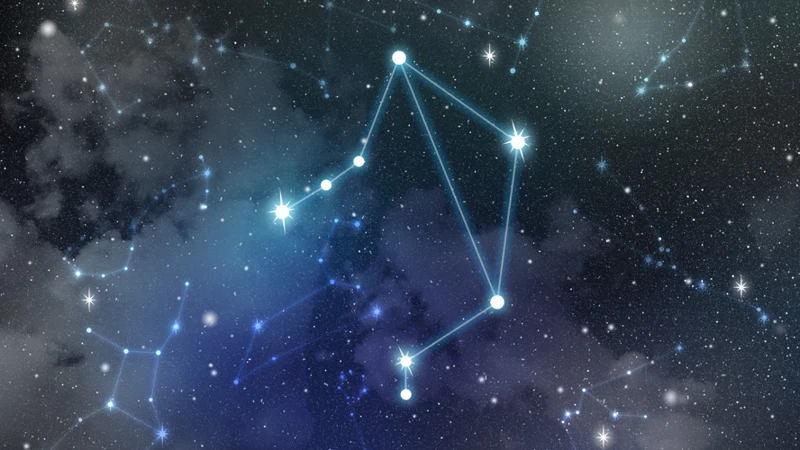
The roles and attributes of gods and goddesses in Hindu mythology are diverse and varied, reflecting the multifaceted nature of existence. These divine beings embody a range of qualities and fulfill different functions within the cosmic order. Some of the key roles and attributes include:
1. Creation and Preservation: Deities like Brahma and Vishnu are associated with the creation and preservation of the universe. Brahma is believed to have created the world, while Vishnu is responsible for its sustenance and maintenance.
2. Transformation and Destruction: Gods such as Shiva are associated with transformation and destruction. Shiva’s role as the destroyer symbolizes the cyclical nature of life, where endings give rise to new beginnings.
3. Knowledge and Wisdom: Saraswati, the goddess of knowledge and arts, represents wisdom, learning, and intellectual pursuits. She is revered by students, academics, and artists alike.
4. Wealth and Prosperity: Lakshmi, the goddess of wealth, is associated with material abundance, prosperity, and fortune. Devotees seek her blessings for financial well-being and success.
5. Powress and Protection: Goddesses like Durga embody strength, courage, and protection. They are invoked for their power and are believed to safeguard individuals or communities from harm.
These roles and attributes of gods and goddesses are not limited to their mythological significance but also have practical implications in people’s lives. By understanding and connecting with these divine qualities, individuals can seek inspiration, guidance, and blessings in various aspects of their existence. Whether it is exploring the depths of knowledge, seeking prosperity, finding strength, or understanding the cycles of life, the gods and goddesses in Hindu mythology offer a wealth of attributes that resonate with the human experience. [For more information on astrology and its connection to well-being, click here for a related article. (/astrology-health-connection-zodiac-wellbeing/)]
Creation and Preservation
The concept of creation and preservation holds immense significance in Hindu mythology and is often associated with several gods and goddesses.
1. Brahma: As the creator of the universe, Brahma is responsible for bringing everything into existence. He is depicted as having four heads, each representing one of the four Vedas, which symbolize knowledge and wisdom. Brahma’s role in creation is highlighted in various mythological texts and stories, emphasizing his importance in shaping the world.
2. Vishnu: Considered the preserver and protector of the universe, Vishnu ensures the balance and harmony of creation. He is believed to manifest in different avatars to maintain order and righteousness on Earth. Vishnu’s avatars, such as Rama and Krishna, are revered for their heroic deeds and teachings, serving as guiding forces for humanity.
3. Lakshmi: The goddess of wealth and prosperity, Lakshmi plays a vital role in preserving abundance and ensuring the well-being of individuals. She is worshipped for blessings related to material wealth, financial stability, and overall prosperity. Devotees seek her blessings to maintain and preserve their resources and to achieve success in their endeavors.
4. Saraswati: Attached to the concept of knowledge and wisdom, Saraswati contributes to the preservation of intellectual and spiritual realms. She is associated with education, arts, and music. Students, scholars, and artists seek her blessings to enhance their learning capabilities, creativity, and preservation of culture through the arts.
The interconnected roles of these gods and goddesses reflect the cycle of creation and preservation within Hindu mythology. Brahma’s creation, Vishnu’s preservation, and Lakshmi and Saraswati’s influence contribute to the balanced existence of the universe. This understanding of the divine roles and attributes provides a framework for devotees to strive for harmony and preservation in their own lives.
Transformation and Destruction
Transformation and destruction are integral aspects of Hindu mythology, embodied by various gods and goddesses. These deities hold the power to bring about significant changes, both in the physical realm and within individuals’ lives.
– Shiva: Known as the god of transformation and destruction, Shiva plays a vital role in Hindu mythology. He is often depicted performing the Tandava, a cosmic dance that signifies the continuous cycle of creation, preservation, and destruction. Shiva’s destructive aspect is not seen as malevolent but rather as a necessary force to clear the path for new beginnings and regeneration. Through destruction, Shiva paves the way for transformation and rebirth.
– Kali: The goddess of time, death, and destruction, Kali represents the fierce and destructive power of the divine feminine. She is often depicted with a fearsome appearance, adorned with a necklace of skulls and a tongue protruding. Kali’s role is to annihilate negative forces and ego attachments, leading to spiritual transformation and liberation. Her destructive energy is seen as a means to eliminate ignorance and falsehood, paving the way for enlightenment.
– Rudra: Another form of Lord Shiva, Rudra, is associated with storms, wildness, and the untamed forces of nature. As the god of fierce winds and tempests, Rudra represents the destructive power of natural forces. His presence signifies the need for balance in nature and reminds humans of the impermanence and fragility of life.
– Goddess Durga: While primarily known as a warrior goddess, Durga holds the power to demolish evil forces and restore harmony. Her battles against demons symbolize the triumph of righteousness over darkness and the transformative power of courage and determination. Durga’s destruction of evil brings about positive change and the restoration of peace and balance.
These deities and their embodiment of transformation and destruction signify the cyclical nature of life. Through their divine actions, they remind individuals of the impermanence of worldly attachments and the potential for growth and renewal. The concept of transformation and destruction is intricately woven into Hindu mythology, offering profound insights into the inevitability of change and the transformative power of divine intervention. By recognizing and embracing the transformative aspects of these gods and goddesses, individuals can strive for personal growth, spiritual evolution, and liberation from the limitations of the material world.
Knowledge and Wisdom
In Hindu mythology, knowledge and wisdom hold immense significance, and several gods and goddesses embody these qualities. One such deity is Saraswati, the goddess of knowledge, wisdom, and the arts. Saraswati is often depicted as a serene and graceful figure adorned with white garments, riding a swan, and holding a veena (a stringed musical instrument). She symbolizes the power of education, learning, and intellectual pursuits.
Saraswati’s association with knowledge extends beyond literature and encompasses all forms of art, music, and sciences. She is revered by students, scholars, artists, and musicians, who seek her blessings for success and skill in their respective fields. Her divine presence is believed to inspire creativity, enhance intellectual abilities, and expand one’s understanding of the world.
In Hindu mythology, the pursuit of knowledge is considered sacred and is seen as a path to spiritual enlightenment. The wisdom gained through learning and self-reflection is regarded as a key aspect of personal growth and self-realization. In this pursuit, the blessings and guidance of Saraswati are sought after through prayers, rituals, and offerings.
The importance of knowledge and wisdom is not limited to Saraswati alone. Other Hindu gods and goddesses, such as Brahma and Ganesha, also embody intellectual prowess and wisdom. Brahma, the creator of the universe, is revered as the ultimate source of knowledge and is associated with the Vedas. Ganesha, the elephant-headed deity known as the remover of obstacles, is considered the patron of intellect and wisdom. He is often worshipped before undertaking any significant endeavor to seek his blessings for success and wisdom.
The concept of knowledge and wisdom extends beyond the mythology into the practical aspects of Hindu culture. Education is highly valued, and the pursuit of knowledge is seen as a noble endeavor. Hindu scriptures emphasize the importance of learning and acquiring wisdom from teachers and gurus. This belief is woven into the fabric of Hindu society, where educational institutions, including traditional gurukuls, thrive as centers of learning.
The significance of knowledge and wisdom in Hindu mythology underscores the deep respect and reverence for intellectual pursuits within the religion. It highlights the belief that true enlightenment comes not only from religious devotion but also from the exploration and understanding of the world around us. By seeking the blessings of deities associated with knowledge and wisdom, Hindus aspire to cultivate intellect, expand their consciousness, and navigate life with wisdom and discernment. This reverence for knowledge as a divine attribute is a testament to the rich cultural heritage and philosophical traditions of Hindu mythology.
Wealth and Prosperity
Wealth and prosperity hold significant importance in Hindu mythology, and several gods and goddesses are associated with these aspects of life. Here are some deities who are revered for their connection to wealth and prosperity:
– Lakshmi: Known as the goddess of wealth and abundance, Lakshmi is highly venerated in Hindu culture. She is portrayed as a beautiful goddess adorned in luxurious garments, often seen standing on a lotus flower and surrounded by gold coins. Devotees worship Lakshmi to seek her blessings for material and financial prosperity. During the festival of Diwali, Lakshmi puja is performed to invite her into homes and bestow blessings upon the household.
– Kubera: Kubera is considered the god of wealth and the guardian of the North direction. He is depicted as a plump, dwarf-like figure adorned with jewelry and carrying a treasure-filled pot. Kubera is believed to distribute wealth to those who worship him with sincerity and devotion. He is often portrayed alongside Lakshmi, symbolizing the balanced flow of wealth and prosperity.
– Ganesha: While primarily known as the remover of obstacles, Ganesha is also associated with wealth and prosperity. As the son of Lakshmi, he is believed to bring financial prosperity and success in endeavors. Ganesha’s association with wealth is exemplified by the presence of his elephant head, which symbolizes abundance and wisdom.
– Kamadeva: Kamadeva, the god of love and desire, is also associated with material wealth. In Hindu mythology, he is depicted as a handsome deity wielding a bow made of sugarcane, with arrows tipped with flowers. Kamadeva’s blessings are sought to attract prosperity and fulfill desires related to wealth and material possessions.
Worship and devotion to these gods and goddesses is considered a means to invoke their blessings and abundance into one’s life. Rituals, prayers, and offerings are made to express gratitude and seek their favor. Their influence on wealth and prosperity is deeply rooted in Hindu mythology and continues to be an integral part of the faith.
Powress and Protection
Powress and protection are fundamental attributes embodied by several gods and goddesses in Hindu mythology. These divine beings, with their immense power and prowess, serve as guardians and defenders of their devotees. Here are some notable deities associated with powress and protection:
1. Durga: Durga is a fierce goddess renowned for her incredible strength and courageous nature. She is depicted riding a lion or tiger and wielding various weapons in her multiple arms, including a trident, sword, and bow. Devotees seek her blessings to overcome obstacles, defeat evil forces, and attain victory in their endeavors.
2. Hanuman: Hanuman, the monkey-faced deity known for his unwavering devotion to Lord Rama, is revered for his physical strength and loyalty. He played a pivotal role in the epic Ramayana, showcasing his heroic feats, such as leaping across oceans and single-handedly defeating powerful demons. Hanuman is believed to protect his devotees from danger and grant them strength and courage.
3. Kali: Kali is a fearsome goddess associated with power and destruction. She is often depicted with multiple arms, each holding a weapon, and is known for her ferocity in combating evil. Kali’s devotees seek her blessings for protection from negative energies and obstacles, and to awaken their own inner strength to face life’s challenges.
4. Bhairava: Bhairava is a fierce form of Lord Shiva, embodying his power and wrath. He is depicted as a terrifying deity with a wrathful expression and a garland of skulls. Worshippers of Bhairava believe that he can provide protection from enemies, guard against evil spirits, and dispel fear.
These gods and goddesses are revered for their ability to provide protection, both physical and spiritual, to their devotees. Their presence symbolizes the belief in the eternal struggle between good and evil and the need for strong, divine guardianship. By seeking their blessings and invoking their power, followers find solace and a sense of security in the ever-changing world. It is through the worship of these deities that individuals find strength and courage to overcome challenges and navigate the path of life.
Mythological Stories and Legends
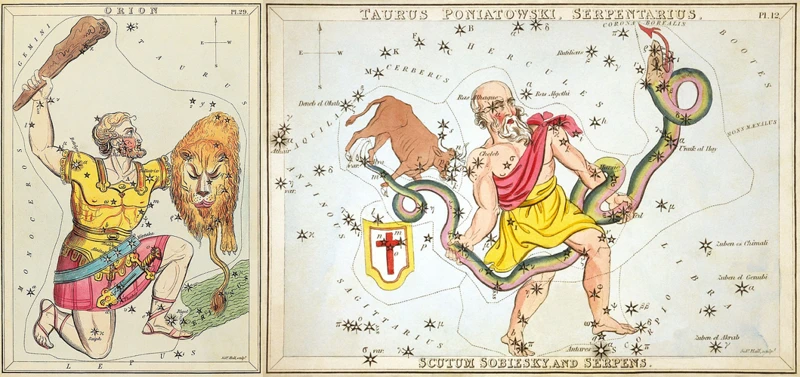
Mythological stories and legends hold a significant place in Hindu mythology, capturing the imagination and providing spiritual insights to followers. These tales are not mere fables, but rather profound narratives that illustrate the deeper truths and values of the religion. One such epic is the Ramayana, which chronicles the adventures of Lord Rama as he embarks on a journey to rescue his beloved wife, Sita, from the clutches of the demon king, Ravana. The story portrays themes of loyalty, righteousness, and the triumph of good over evil. Similarly, the Mahabharata tells the tale of the great Kurukshetra war, where the Pandavas and Kauravas, two branches of a royal family, engage in a cataclysmic battle. This epic showcases complex moral dilemmas, the importance of duty, and the consequences of human actions. The Puranas, a collection of ancient texts, contain a multitude of stories depicting the lives and exploits of various gods and goddesses, delving into their divine qualities and guiding principles. These mythological stories and legends not only entertain and captivate, but also serve as teaching tools, imparting timeless wisdom and moral lessons that continue to resonate with individuals today.
The Ramayana
The Ramayana is an epic Hindu mythological story that holds immense significance in Indian culture. Composed by the sage Valmiki, it chronicles the journey of Prince Rama, an incarnation of Lord Vishnu, and his adventures in rescuing his wife, Sita, from the demon king Ravana. This epic tale is divided into seven books, known as Kandas, and consists of over 24,000 verses.
The story begins with the exile of Rama, along with his wife Sita and his loyal brother Lakshmana, due to a conspiracy within the kingdom. During their exile, Sita is abducted by Ravana, the powerful king of Lanka. This sets the stage for Rama’s quest to rescue his beloved wife and defeat the forces of evil. With the help of Hanuman, the monkey god, and an army of loyal allies, Rama embarks on a treacherous journey to Lanka to confront Ravana. The epic culminates in a fierce battle between Rama and Ravana, resulting in the ultimate victory of good over evil.
The Ramayana is not just a tale of adventure and heroism, but it also teaches valuable lessons and explores deeper philosophical concepts. It emphasizes the importance of righteousness (dharma), loyalty, devotion, and the triumph of good over evil. The characters in the Ramayana, including Rama, Sita, Lakshmana, Hanuman, and Ravana, are revered and worshipped as ideals of virtue, strength, and devotion. Their actions and virtues serve as a guide for followers of Hinduism, instilling moral values and illustrating the power of righteousness in the face of adversity.
The Ramayana has not only shaped the cultural fabric of India but has also had a profound influence on art, music, dance, literature, and theater. It has been adapted into various regional languages, and its retellings in different forms continue to resonate with people across generations. The epic is often recited during religious ceremonies and festivals, such as Diwali, which commemorates the return of Rama to Ayodhya after his triumph over Ravana.
The Ramayana stands as a timeless masterpiece, bridging the gap between mythology and human experience. It beautifully captures the complexities of human emotions, the power of devotion, and the eternal struggle of good against evil. Through its captivating narrative and profound teachings, the Ramayana continues to inspire and enlighten readers, providing valuable insights into the moral and spiritual dimensions of life.
The Mahabharata
The Mahabharata is a majestic epic that holds a prominent place in Hindu mythology. This ancient Sanskrit text is renowned for its captivating narrative, moral dilemmas, and profound philosophical teachings. It chronicles the dynastic struggle for power between two Kuru prince cousins – the Pandavas and the Kauravas. At the heart of this epic is the Bhagavad Gita, a sacred conversation between the prince Arjuna and Lord Krishna. The Mahabharata explores complex themes such as duty, righteousness, love, and the eternal battle between good and evil. It delves into the moral complexities faced by the epic’s diverse array of characters, as it weaves together stories of valor, loyalty, and treachery. The Mahabharata serves as a timeless guide to navigating the complexities of life and is more than just an epic tale — it is a profound spiritual and philosophical journey that continues to resonate with readers across generations.
The Puranas
The Puranas are a significant part of Hindu mythology, consisting of a collection of ancient texts that explore various aspects of creation, cosmology, genealogy, and legends of gods and goddesses. These texts are written in the form of narratives and are believed to be composed over a span of centuries.
The Puranas serve as a bridge between the sacred scriptures known as the Vedas and the religious practices of Hinduism. They provide detailed accounts of the genealogy and exploits of gods and goddesses, their interactions with humans, and the cyclical nature of the universe.
There are 18 main Puranas, each dedicated to specific deities or aspects of divine existence. Some popular Puranas include the Vishnu Purana, Shiva Purana, Devi Bhagavata Purana, and Bhagavata Purana. These texts not only shed light on the mythological stories associated with the gods and goddesses but also provide moral and ethical teachings.
One of the most well-known stories found in the Puranas is the churning of the cosmic ocean, known as the Samudra Manthan, which involves the gods and the demons. This tale symbolizes the struggle between good and evil, highlighting the importance of balance and the ultimate triumph of righteousness.
The Puranas also contain descriptions of various pilgrimage sites, rituals, and festivals associated with the worship of gods and goddesses. Through these texts, devotees gain a deeper understanding of the cultural significance and religious practices that are woven into the fabric of Hindu mythology.
The Puranas are not merely mythical stories but are revered as scriptures by millions of Hindus worldwide. They provide insights into the divine realms, spiritual teachings, and the profound relationship between gods, goddesses, and humanity. Exploring the Puranas allows us to delve into the enchanting world of Hindu mythology, enriching our understanding of the gods and goddesses and their roles in shaping beliefs and practices.
Devotion and Worship
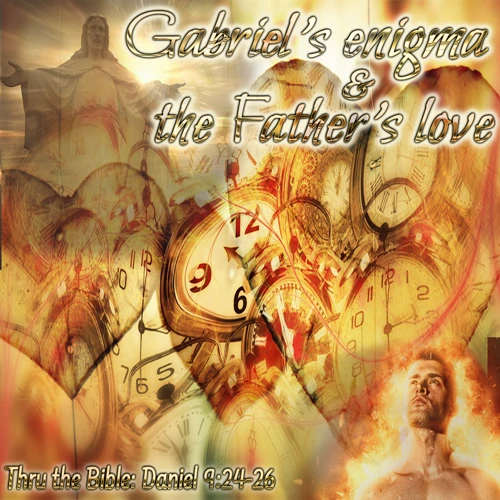
Devotion and worship are integral aspects of Hinduism, where followers express their reverence and connection to the gods and goddesses. The practice of devotion, known as bhakti, involves the deep emotional and spiritual bond between the devotee and the divine. It is believed that through devotion, one can attain spiritual enlightenment and experience the grace of the deities.
Worship in Hinduism takes various forms, ranging from personal acts of devotion to elaborate ceremonies and rituals performed in temples. Individuals may establish personal altars in their homes, adorned with images or idols of their chosen deities. These altars provide a sacred space for daily prayers, offering of flowers, incense, and other offerings as a gesture of devotion and gratitude.
Temple worship is a central aspect of Hindu religious practices. Devotees visit temples to offer prayers, participate in rituals, and seek blessings from the gods and goddesses. Temple priests perform elaborate ceremonies, known as puja, where offerings are made to the deities, and hymns and prayers are recited. The devotees actively participate in the puja by engaging in devotional singing, chanting mantras, and offering their prayers and wishes.
Festivals also serve as occasions for devotees to express their devotion and engage in worship. Events such as Diwali, Navratri, and Holi are marked by grand celebrations and ceremonies dedicated to specific deities. These festivals provide an opportunity for communal worship, where devotees come together to celebrate and seek the blessings and grace of the gods and goddesses.
Devotion and worship in Hinduism are deeply personal and can vary from person to person. Some may find solace and connect through silent meditation and contemplation, while others may engage in community gatherings and ecstatic forms of devotion like kirtan, where hymns and bhajans are sung in a repetitive and rhythmic manner. The essence of devotion and worship lies in the sincere and wholehearted expression of love, faith, and gratitude towards the divine.
By engaging in acts of devotion and worship, followers of Hinduism seek to strengthen their bond with the gods and goddesses, cultivate spiritual growth, and experience a sense of divine presence in their lives. It is through this devotion that individuals seek guidance, protection, blessings, and ultimately strive towards union with the divine. Devotion and worship serve as a powerful means of connecting with the divine forces that permeate Hindu mythology and shape the religious and cultural fabric of the faith.
Symbolism and Iconography
![]()
Symbolism and iconography hold great significance in the portrayal of gods and goddesses in Hindu mythology. Through intricate imagery and sacred symbols, these representations not only capture the essence of the deities but also convey profound spiritual and philosophical messages.
In Hinduism, each god and goddess is associated with specific symbols and iconographic elements that serve as visual cues to their attributes and powers. For example:
1. Brahma: He is often depicted with four faces, each facing a different direction, symbolizing his all-encompassing knowledge and presence. He may also be seen holding the Vedas, representing his role as the creator and custodian of cosmic knowledge.
2. Vishnu: He is commonly shown with four arms, holding a conch shell (representing the primordial sound of creation), a discus (symbolizing his power to destroy evil), a lotus flower (signifying purity and spiritual enlightenment), and a mace (representing his strength and protection).
3. Shiva: His iconography often includes a third eye on his forehead, which symbolizes inner knowledge and perception. He may be depicted holding a trident (representing the three aspects of existence: creation, preservation, and destruction), and he is often shown seated in meditation on a tiger or bull, symbolizing his power and control over the natural world.
4. Lakshmi: She is typically depicted with four arms, signifying her ability to bestow blessings and fulfill the four aims of life: righteousness, wealth, desire, and liberation. She is often seen showering gold coins or sitting on a lotus, symbolizing abundance, prosperity, and purity.
5. Saraswati: She is often portrayed playing a veena (a musical instrument), symbolizing harmony, creativity, and the pursuit of knowledge and arts. She may also be shown with a swan, which represents spiritual purity and discernment.
These symbols and iconographic representations serve as a visual language that transcends words, conveying deeper meanings and evoking a sense of sacredness. They help devotees connect with the divine energies and understand the qualities and attributes associated with each deity. Additionally, these symbols and images are found in various forms of artwork, sculptures, and temple designs, enriching the visual landscape of Hindu religious practices. The intricate details and symbolism within Hindu icons reflect the complex mythology and spiritual depth of the religion.
Gods and Goddesses in Daily Life

In Hinduism, gods and goddesses are not only revered and worshipped in temples and during religious festivals, but their presence is also deeply ingrained in the daily lives of devotees. The belief in the divine permeates various aspects of existence, from personal rituals to household customs.
Devotees often have personal altars or shrines within their homes, adorned with images or idols of their chosen deities. These sacred spaces serve as a focal point for prayers, offering flowers, incense, and other symbolic offerings. It is through these daily acts of devotion that individuals establish a direct connection with the gods and goddesses they worship.
Morning and evening rituals are common practices in Hindu households, where family members gather to offer prayers and seek the blessings of the deities. These rituals may involve chanting mantras, reciting prayers, and performing specific ceremonies according to traditional customs.
Certain gods and goddesses are associated with specific days of the week, and devotees may observe special practices or fasts on those days to honor and please their chosen deity. For example, Tuesdays are dedicated to Lord Hanuman, the monkey god known for his devotion and strength, while Fridays are dedicated to the goddess Lakshmi, the harbinger of wealth and prosperity.
Gods and goddesses are not only worshipped within the confines of homes but also in public spaces. Temples dedicated to various deities can be found in every corner of India and even in other parts of the world where Hindu communities reside. These temples serve as important cultural and religious centers, where devotees gather to offer prayers, participate in religious ceremonies, and seek spiritual solace.
Gods and goddesses are often invoked during important milestones and events in one’s life. From birth ceremonies to weddings and funerals, rituals centering around the deities are an integral part of these significant life passages. The blessings and guidance of the gods and goddesses are sought to ensure auspiciousness, protection, and prosperity in every step of the journey.
The presence of gods and goddesses in daily life extends beyond the religious realm. Their influence can be seen in art, literature, music, and even popular culture. Traditional dance forms and music compositions often depict episodes from mythological stories or are dedicated to specific deities. Many individuals also adopt names derived from the gods and goddesses, reinforcing their connection to the divine in a personal and tangible way.
The gods and goddesses of Hindu mythology are not distant or abstract figures but are integrated into the fabric of daily life. Their presence provides comfort, guidance, and a sense of divine protection in the lives of believers. Whether through personal rituals, temple visits, or cultural expressions, the influence of gods and goddesses in daily life is profound and pervasive, shaping the worldview and spiritual practices of millions of Hindus worldwide.
The Role in Dharma and Karma
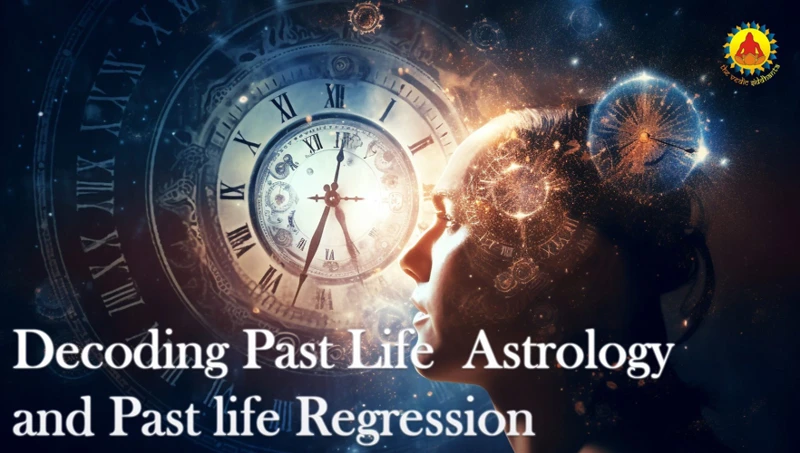
In Hinduism, gods and goddesses play a significant role in shaping the concepts of dharma and karma. Dharma refers to the moral and ethical duties and responsibilities that individuals must fulfill in their lives, while karma represents the law of cause and effect, where actions have consequences. The gods and goddesses embody and exemplify these principles, guiding individuals on the path of righteousness and determining their karmic outcomes.
The various deities in Hindu mythology serve as moral exemplars and provide guidance on righteous living. For example, Lord Rama, an incarnation of Lord Vishnu, is considered the epitome of righteousness and adherence to dharma. His actions and decisions in the epic Ramayana are revered as the ideal code of conduct for individuals to follow.
The gods and goddesses are believed to be the dispensers of justice, ensuring that one’s actions, whether good or bad, are duly rewarded or punished. This concept is reflected in the popular belief that the deities actively observe and keep a record of an individual’s deeds, influencing their karmic cycle.
For instance, the goddess Kali, known for her fierce nature, symbolizes the consequences of negative actions and the destruction of negative karma. She serves as a reminder that harmful actions not only have immediate effects but also impact future lives.
Additionally, the gods and goddesses provide inspiration and support in one’s pursuit of dharma. Devotees often pray to these deities, seeking their blessings and guidance in navigating the complexities of life. Whether it is through rituals, devotional practices, or the recitation of mantras, individuals invoke the presence and grace of the divine beings to assist them in upholding their dharma.
The role of gods and goddesses in dharma and karma is intricately woven into the cultural fabric of Hinduism. Their stories and teachings serve as moral compasses, guiding individuals toward righteousness and moral conduct. By embodying and personifying the principles of dharma and karma, the gods and goddesses inspire devotees to lead virtuous lives and cultivate positive actions with the understanding that these actions will shape their destiny and future karmic outcomes.
Comparison with Other Mythologies
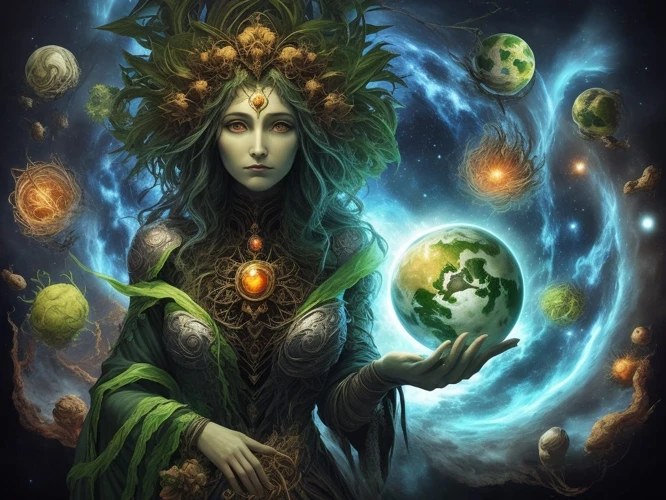
When comparing Hindu mythology with other mythologies from around the world, we find both unique aspects and intriguing similarities. One key difference is the sheer number of gods and goddesses in Hindu mythology, each with their own distinct stories, attributes, and roles. This multitude of deities reflects the diverse nature of Hinduism and the various aspects of life and existence it seeks to explore.
In contrast, many other mythologies have a smaller number of prominent gods and goddesses, often representing specific domains such as the sun, the sea, or war. Hinduism, on the other hand, encompasses a range of gods and goddesses, each responsible for specific aspects of creation, preservation, and transformation. Additionally, the concept of reincarnation and the belief in karma, where actions in this life impact the next, are unique to Hinduism.
Despite these differences, there are intriguing similarities between Hindu mythology and other mythologies. For instance, the concept of a divine trinity is present in various mythological traditions. In Hinduism, the trinity consists of Brahma, Vishnu, and Shiva, representing creation, preservation, and destruction, respectively. Similarly, in Norse mythology, there is a trinity of Odin, Thor, and Freyr, and in ancient Greek mythology, Zeus, Poseidon, and Hades form a similar triadic structure.
The existence of goddesses in Hindu mythology aligns with other mythologies that venerate powerful female deities. For example, Greek mythology includes goddesses like Athena, Aphrodite, and Artemis, who hold significant roles and attributes. The reverence for the divine feminine can also be seen in the Egyptian pantheon with goddesses like Isis and Ma’at.
By exploring and comparing various mythological traditions, we gain a broader perspective on the diverse ways in which different cultures have sought to explain the mysteries of the universe and the human experience. While Hindu mythology stands out for its vast pantheon and intricacies, it shares common threads with other mythologies that connect humanity’s collective spiritual exploration.
Influence on Art and Culture
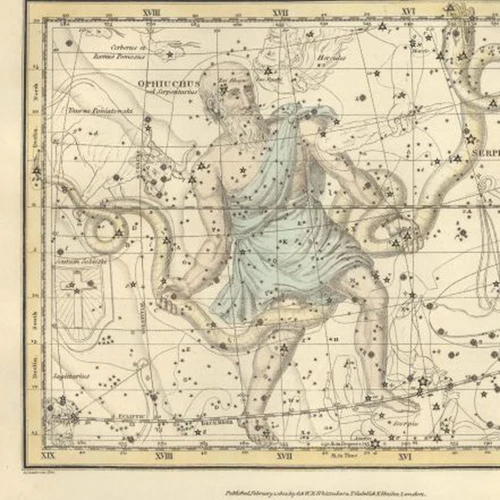
The influence of gods and goddesses in Hindu mythology extends far beyond the boundaries of religious practice. It permeates various aspects of art and culture, leaving an indelible mark on literature, sculpture, painting, dance, music, and architecture.
In Hindu literature, the epics of the Ramayana and the Mahabharata are replete with stories of gods and goddesses, their extraordinary powers, and their interactions with mortal beings. These timeless tales have served as a wellspring of inspiration for poets, writers, and playwrights throughout history. The characters and their attributes have been explored in depth, giving rise to a vibrant literary tradition that continues to flourish to this day.
The depiction of deities in sculpture and painting has been a significant form of artistic expression in Hindu culture. Intricately carved temple sculptures and colorful paintings grace the walls of ancient temples and sacred sites. Each deity is depicted with meticulous attention to detail, adorned with symbolic attributes and gestures. These artistic representations not only serve as objects of reverence but also convey the essence and narrative of the gods and goddesses.
Dance forms such as Bharatanatyam, Kathakali, and Odissi often draw inspiration from Hindu mythology. Through graceful movements and expressions, dancers embody the characters of gods and goddesses, bringing their stories to life on stage. The music accompanying these dance forms also reverberates with devotional fervor, invoking the divine presence and invoking a sense of spiritual connection.
The influence of Hindu gods and goddesses can even be felt in the majestic architecture of temples and sacred sites. Intricate carvings, towering spires, and ornate designs reflect the reverence and adoration accorded to these divine beings. From the ancient temples of Khajuraho and Konark to the awe-inspiring Brihadeeswara Temple, these architectural marvels stand as testaments to the divine inspiration behind their creation.
The profound influence of gods and goddesses in Hindu mythology on art and culture cannot be overstated. Their stories, symbols, and attributes serve as a wellspring of creativity and inspiration. They continue to inspire generations of artists, musicians, writers, and performers, weaving a rich tapestry of artistic expression that celebrates the divine and preserves the cultural heritage of Hinduism. This enduring influence ensures that the gods and goddesses of Hindu mythology are not confined to religious practices alone but are celebrated and embraced as a vibrant part of the artistic and cultural fabric of society.
The Role in Festivals and Rituals
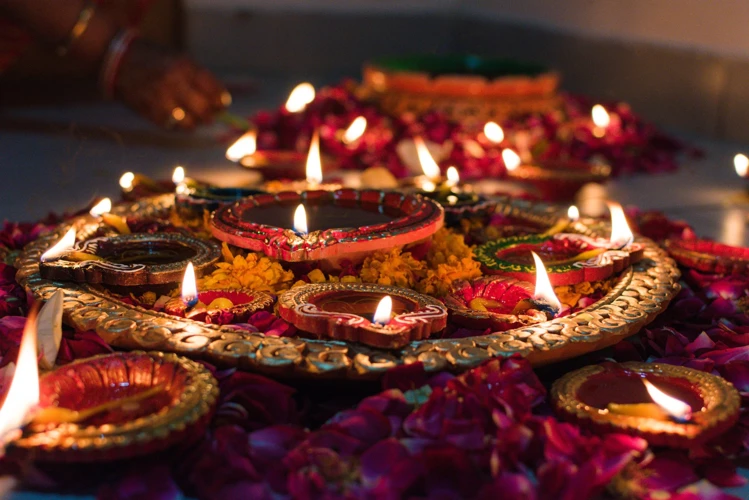
In Hinduism, festivals and rituals hold immense significance in honoring and celebrating the gods and goddesses of Hindu mythology. These events serve as a means to express devotion, seek blessings, and strengthen the spiritual connection with the divine.
One of the most widely celebrated festivals is Diwali, also known as the Festival of Lights. This grand celebration marks the triumph of light over darkness and good over evil. During Diwali, devotees illuminate their homes with diyas (oil lamps) and decorative lights to welcome the goddess Lakshmi and seek her blessings for prosperity and wealth. Fireworks, feasts, and exchange of gifts are also integral parts of this vibrant festival.
Another significant festival is Navratri, which lasts for nine nights and is dedicated to the goddess Durga. Devotees perform energetic dance forms, such as Garba and Dandiya, as a way to worship and honor the divine feminine power. Navratri culminates with Durga Puja, where elaborate idols of the goddess are worshipped and immersed in water, symbolizing her return to her heavenly abode.
During the holy month of Shravan, devotees observe the festival of Shivratri to honor Lord Shiva. This night-long vigil involves fasting, meditation, and offering prayers to Lord Shiva. Devotees believe that by observing this ritual, they attain spiritual purification and blessings from Lord Shiva.
In addition to these major festivals, there are several other regional and seasonal celebrations dedicated to different gods and goddesses. For example, Holi, the festival of colors, is celebrated in honor of Lord Krishna and signifies the arrival of spring. Ganesh Chaturthi honors Lord Ganesha, the elephant-headed god of wisdom and prosperity, and involves elaborate processions and the immersion of clay idols in water.
Rituals and ceremonies also play a crucial role in Hindu worship. Pujas (religious rituals) are performed at home and in temples to invoke the presence and blessings of the deities. These rituals involve offering flowers, incense, lamps, and food to the gods, accompanied by chanting of mantras and prayers.
Festivals and rituals serve as a way to not only express devotion but also bring the community together in joyous celebration. They provide an opportunity for individuals to connect with the gods and goddesses on a deeper level, seeking their guidance and blessings. The vibrant colors, music, dance, and elaborate rituals create an atmosphere filled with spirituality and reverence, making festivals and rituals an integral part of Hindu culture and religious practice.
Contemporary Perspectives
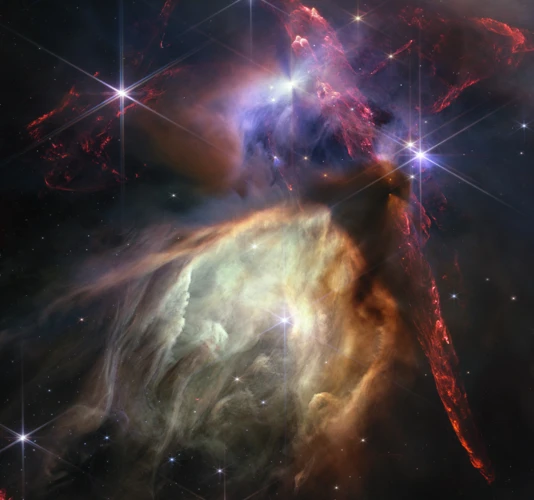
Contemporary perspectives on gods and goddesses in Hindu mythology demonstrate the enduring relevance and evolving interpretations of these divine beings. In modern times, there is a continued reverence for the traditional deities, alongside new ways of understanding their symbolism and significance.
One aspect of contemporary perspectives is the exploration of the psychological and symbolic meanings behind the gods and goddesses. Many scholars and individuals interpret these deities as archetypes representing various aspects of the human psyche. For example, Shiva may be seen as a symbol of personal transformation and inner strength, while Lakshmi represents the abundant and nurturing aspects of life.
Another contemporary perspective involves the integration of Hindu mythology into popular culture. Through movies, television shows, and literature, these ancient stories and characters continue to captivate audiences worldwide. The adaptation and reinterpretation of mythological tales allow for a broader understanding and engagement with Hindu deities.
There is a growing interest in exploring the ethical and moral teachings found within Hindu mythology. The principles of dharma (righteousness) and karma (action and consequence) are seen as practical guidelines for leading a meaningful life. The stories of gods and goddesses serve as moral lessons and inspire individuals to cultivate virtuous qualities.
The diaspora of Hindus across the globe has led to the adaptation of religious practices to new environments. With the blending of cultures and the influence of globalization, contemporary perspectives on Hindu mythology embrace inclusivity and interfaith dialogue. It is not uncommon to find individuals from diverse backgrounds appreciating and engaging with the gods and goddesses of Hinduism.
Contemporary perspectives on gods and goddesses in Hindu mythology demonstrate an ongoing relevance and adaptability. As society evolves, new interpretations and understandings emerge, allowing for a dynamic and enriching exploration of these divine beings. From psychological symbolism to popular culture adaptations, the influence of Hindu deities continues to expand and inspire in the modern world.
Conclusion
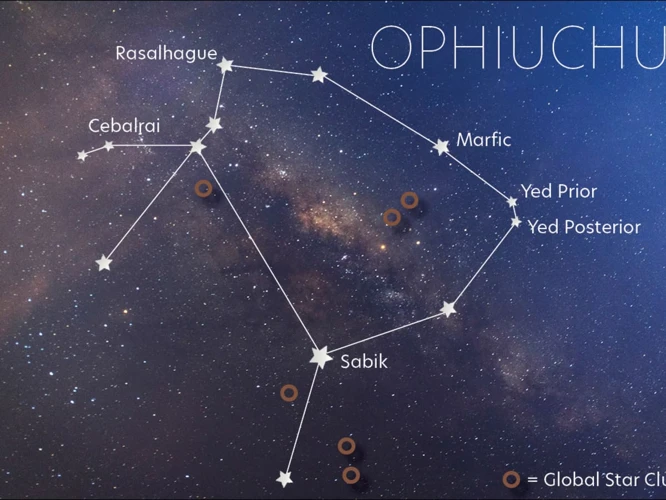
In conclusion, the role of gods and goddesses in Hindu mythology is vast and multifaceted. These divine beings hold immense significance in the religious and cultural practices of Hinduism. From creation and preservation to destruction and transformation, they embody the cycle of life and serve as powerful symbols of cosmic forces. The major gods and goddesses, such as Brahma, Vishnu, Shiva, Lakshmi, Saraswati, and Durga, each bring their unique attributes and qualities, inspiring devotees in various aspects of life. Through captivating mythological stories and legends, these deities exemplify virtues, impart wisdom, and guide people towards righteousness and spiritual fulfillment. The symbolism and iconography associated with these gods and goddesses are deeply ingrained in Hindu art, architecture, and rituals. They are revered and worshipped in temples and households, where devotion and offerings are made to seek their blessings. Furthermore, the influence of Hindu mythology extends beyond religious practices, permeating into various aspects of Indian society, including literature, music, dance, and even contemporary pop culture. The stories and teachings of these deities continue to resonate with believers and provide a framework for human existence, moral values, and spiritual growth. The gods and goddesses of Hindu mythology are more than just characters in ancient tales—they remain a living presence, guiding and inspiring countless individuals in their journey towards enlightenment and self-realization.
Frequently Asked Questions

1. Who are the Trimurti in Hindu mythology?
The Trimurti is a concept in Hindu mythology that represents the three primary aspects of the divine, comprising Brahma, Vishnu, and Shiva. Brahma is the creator, Vishnu is the preserver, and Shiva is the destroyer and transformer.
2. How do gods and goddesses in Hindu mythology relate to everyday life?
In Hinduism, gods and goddesses are not seen as distant or unrelated to everyday life. Instead, they are believed to be present in every aspect of life, guiding and influencing human experiences, providing blessings, and safeguarding devotees from harm.
3. Can one worship multiple gods and goddesses in Hinduism?
Yes, Hinduism allows for the worship of multiple gods and goddesses. It recognizes that different deities embody different attributes and fulfill various roles, and individuals can choose to worship the particular deities that resonate with their beliefs, needs, and aspirations.
4. Are gods and goddesses in Hindu mythology considered real entities?
In Hindu mythology, gods and goddesses are considered real entities, existing beyond the physical realm. They are seen as manifestations of the divine consciousness and are worshipped as representations of universal principles and energies.
5. What is the significance of mythology in Hinduism?
Mythology plays a crucial role in Hinduism, as it provides a framework for understanding profound philosophical concepts, moral values, and the complexities of the human condition. It serves as a source of inspiration, guidance, and spiritual insights for followers.
6. Are there any female deities in Hinduism?
Absolutely! Hinduism has a rich tradition of female deities. Some significant goddesses include Lakshmi, Saraswati, Durga, Kali, Parvati, and Radha. These goddesses represent various aspects of feminine power, wisdom, and creativity.
7. Are there any stories of gods and goddesses in Hindu mythology interacting with humans?
Yes, Hindu mythology is replete with stories of gods and goddesses interacting with humans. These interactions often occur through avatars, where deities descend to earth in human forms, such as Rama and Krishna, to teach, guide, and protect mortals.
8. Are there any temples dedicated to specific gods and goddesses in Hinduism?
Absolutely! Hinduism has countless temples dedicated to different gods and goddesses. Some famous ones include the Tirupati Balaji Temple for Vishnu, the Kashi Vishwanath Temple for Shiva, and the Kamakhya Temple for the goddess Kamakhya.
9. How are the gods and goddesses depicted in Hindu iconography?
Gods and goddesses in Hindu iconography are depicted with specific symbols and attributes to represent their unique qualities and roles. For example, Vishnu is often shown with a discus (chakra) and a conch shell (shankha), while Shiva is depicted with a trident (trishula) and a snake around his neck.
10. Can non-Hindus appreciate and connect with gods and goddesses in Hindu mythology?
Absolutely! The beauty of Hindu mythology is its inclusivity and universality. Non-Hindus can appreciate and connect with gods and goddesses in Hindu mythology as embodiments of human virtues, universal values, and archetypal energies that transcend specific religious boundaries.
References
Frequently Asked Questions

1. What is Hindu mythology?
Hindu mythology refers to the collection of stories, legends, and beliefs that are an integral part of Hindu culture and religion. It encompasses a vast range of gods, goddesses, heroes, and supernatural beings, as well as epic narratives and sacred texts.
2. How many gods and goddesses are there in Hindu mythology?
Hindu mythology is rich with a multitude of gods and goddesses, so it is difficult to determine an exact number. However, there are several major deities who hold significant importance, and countless other lesser-known divine beings.
3. What are the roles and attributes of gods and goddesses in Hindu mythology?
The gods and goddesses in Hindu mythology embody various roles and possess distinct attributes. They are associated with creation, preservation, transformation, destruction, knowledge, wisdom, wealth, power, protection, and more. Each deity represents different aspects of life and the universe.
4. Are the gods and goddesses in Hindu mythology worshipped?
Yes, the gods and goddesses in Hindu mythology are widely worshipped by Hindus. They are seen as divine beings who can grant blessings, protect devotees, and bring prosperity. Worship can take various forms, including rituals, prayers, offerings, and celebrations.
5. What are some famous mythological stories and legends in Hindu mythology?
Hindu mythology is replete with captivating stories and legends. Some of the most famous ones include the epic tales of the Ramayana and the Mahabharata, which are filled with larger-than-life characters, moral teachings, and profound philosophical insights.
6. How do gods and goddesses in Hindu mythology influence art and culture?
The gods and goddesses in Hindu mythology have played a significant role in shaping art and culture throughout history. Their depictions can be found in various art forms, such as sculptures, paintings, dance, music, and literature. They have also inspired elaborate temple architecture and intricate rituals.
7. What is the significance of gods and goddesses in daily life?
For many Hindus, gods and goddesses are not just revered spiritual figures but also play an active role in daily life. They are seen as protectors, guides, and sources of inspiration. Devotees often seek their blessings for health, prosperity, success, and overall well-being.
8. How do gods and goddesses in Hindu mythology connect with dharma and karma?
In Hindu mythology, gods and goddesses are believed to embody the principles of dharma (righteousness) and karma (action and consequences). They serve as role models and teach important moral values and ethical codes through their actions and teachings in mythological stories.
9. How does Hindu mythology compare with other mythologies?
While each mythology has its distinct traits, Hindu mythology stands out for its vast pantheon of gods and goddesses, intricate folklore, and philosophical depth. It differs in its emphasis on cyclical time, multiple paths to salvation, and the interconnectedness of all beings.
10. Do the gods and goddesses in Hindu mythology have a role in contemporary society?
Absolutely! The gods and goddesses in Hindu mythology continue to hold great relevance in contemporary society, both in India and among the Hindu diaspora. They provide guidance, moral values, and a sense of cultural identity in an ever-changing world.







